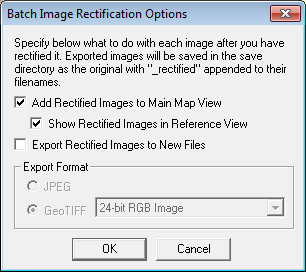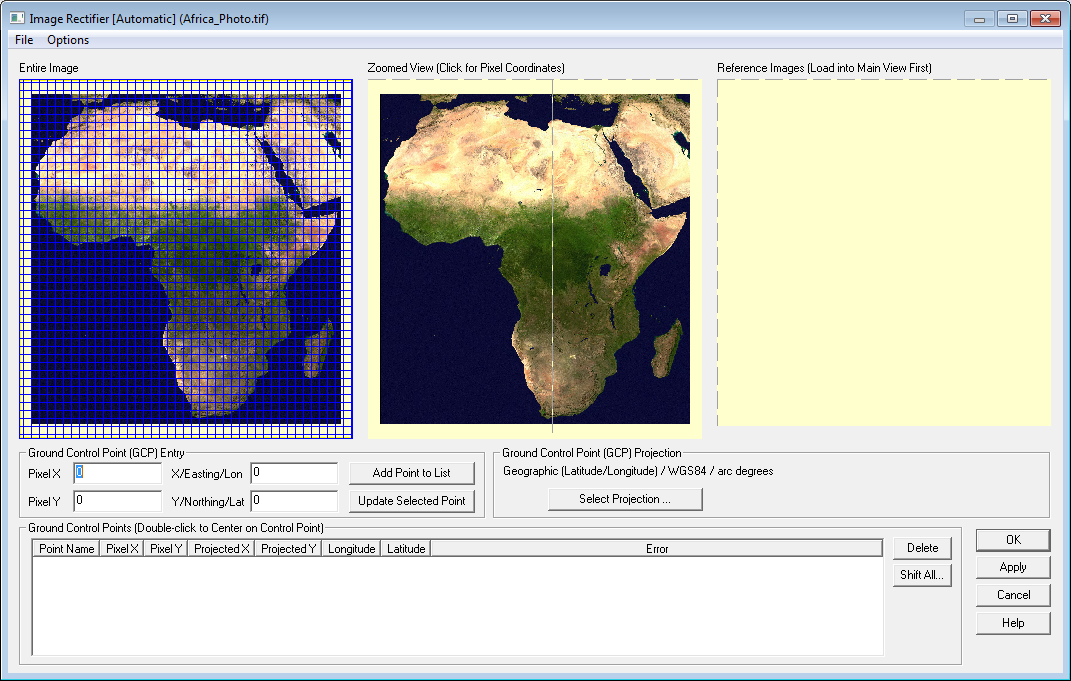
The Image Rectification feature in Global Mapper allows you to load and work with any JPG, PNG, or TIFF imagery, regardless of whether or not spatial positioning information is provided with it.
For example, you could scan in an image of a map to a JPG file, use the File->Rectify imagery menu command to enter the coordinates of several points on that image, and then load it into Global Mapper, properly overlaid with any other loaded data.
Once you have rectified an image in Global Mapper, you can then export it to any of the supported export formats to obtain a fully rectified image that can then be immediately loaded into numerous other imaging and GIS packages.
If you find that after rectifying a file that you want to modify the rectification, you can simply select the layer in the Overlay Control Center, then right-click and select the Modify Layer Position/Projection option to bring up the rectification dialog for that layer.
There are two ways to rectify imagery in Global Mapper. The first is to simply load the imagery file needing to be rectified just like any other file. Global Mapper will automatically prompt you to rectify an image if it cannot automatically determine where on the earth the image should be placed.
If you indicate that you would like to rectify an image when prompted, the Image Rectifier dialog will appear, allowing you to enter ground control points for the image in order to rectify it. This process is described in detail later.
By using the Rectify (Georeference) Imagery command under the File menu, you can select multiple images to rectify at a time. You will be allowed to rectify all images that you select, regardless of whether they already contain valid positioning information. In this way, you can correct poorly positioned imagery.
Using the Batch Image Rectification Options dialog (pictured below), you can setup whether you would like to view the images after rectification, export them to one of several formats, or both

Regardless of which options you select, you will then be allowed to rectify each image in turn using the Image Rectifier dialog, while is described in detail later. As you rectify each image, it will get added to the Reference Images view in the Image Rectifier dialog, allowing you to select ground coordinates from it for subsequent images. This allows you to ensure a good fit between adjacent data files.
If you selected to save the image(s) to JPG or GeoTIFF image(s), the new files will be written after you have rectified ALL of the selected files. This is extremely useful as you can setup the rectification parameters for numerous images, then let the sometimes lengthy rectification and saving process happen while you do something else. All newly rectified files will be created in the same directory as the original images, with _rectified appended just before the file extension. The original imagery will remain intact and unchanged.

The Image Rectifier dialog is the heart of the image rectification process. This dialog contains everything that you need to rectify an image, from graphical views of the image, to lists of ground control points, to an Options menu for selecting the rectification and resampling methods to use. Each part of this dialog is covered in detail below.